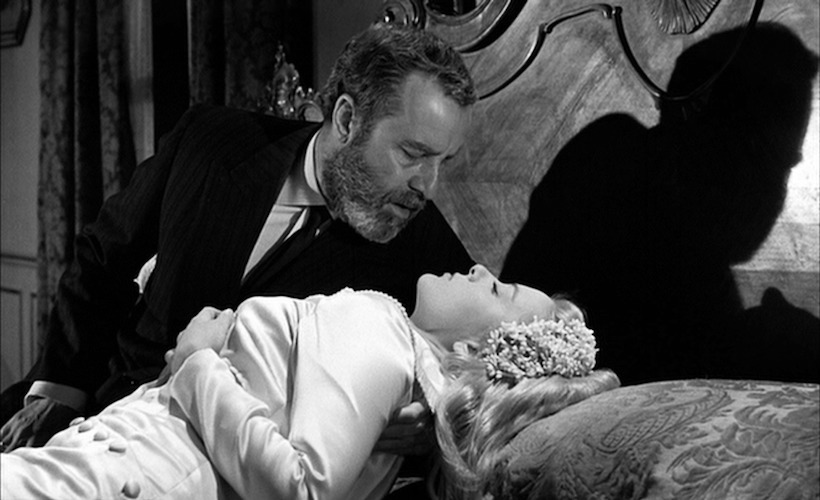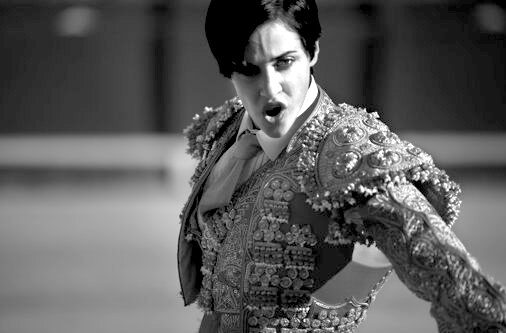This week we discussed the intertwining of Realism and Neorealism in Buñuel’s Viridiana, and how Surrealism played an important role as well in the film’s iconographic representation of faith.

Considering this discusion and your reading of the film, ask what you consider would be a most important question to pose about the film, and propose an answer to that question.
Please, submit the post by Monday at noon.

Does losing your religion mean losing your faith?
I was out sick again last week but I have managed to view the film and do the readings. Viridiana is surely and interesting film. While there are heavy themes of religion, incest is also very present in the lusting of our main character by her uncle as well her the insinuation that she and her cousin will be together in the end.
Viridiana starts as a nun but through a rape claim by her uncle (that proves to be false) she becomes confused about her ties to her covenant and religion. Sexual assault affects many people in different way and losing your religion after being told you were drugged and raped is not in any way crazy. However, this does not allow Viridiana to lose her spirituality. She shows how she is still connected to her own moral code and God by helping beggars after her uncle passes away and leaves her his house. Viridiana has not lost her faith, but has changed her values. She continues this until she is almost sexually assaulted again, but escapes with the help of her cousin.
Religion and spirituality are two separate concepts and losing your religion or detaching yourself from it does not mean that you lose touch with your morals, values, and faith.
How does the setting play into the symbolism of Viridiana — what parts of Francoist Spain are illuminated in the different places that the film depicts?
In Viridiana, we see a limited number of places that the characters venture — that being limited to the convent in the opening scene, the property owned by Viridiana’s family, and a brief scene of the town when Viridiana invites the homeless people to join her at her home. The majority of the film takes place inside the mansion and on the dying farm that surrounds it — which calls to question what these two places symbolize in Buñuel’s masterpiece. The former, in its beauty and elegance, most likely connects to the bourgeois in Spain and Franco himself. We learned that in order to rise to power, Franco had the support of a small minority of wealthy nationalist who helped his political assent in the time of chaos. The Uncle’s mansion symbolizes the elegance that these people were afforded and highlights the discrepancy between the 1% and the rest of the struggling rural population. This group and setting is identified in the dying farm that the homeless beggars are allowed to live upon in exchange for their manual labor. Here the struggle of the majority of Spain’s population is exemplified — one that is marked by poverty and repression. Viridiana and Jorge keep the beggars from the house and in their own areas, allowing them to remain on the premises if they follow their rules.
Early in the film Don Jaime states that the farm has long been overrun with weeds and is not being used to produce anything. This thread seems to mirror certain films such as La Aldea Maldita, where it is early established the earth is not producing sustenance for the people by showing the dry soil and toiling laborers above it. However, as the film progresses and Don Jaime dies, Jorge begins industrializing the dying farm and using it for profit. This could represent the shift towards capitalism and industry that Spain tended towards in the late 50s and the abandonment of autarky. Buñuel’s commentary here fits well with the political tensions of Spain at the time and follows his use of symbolism throughout the film.
How does Viridiana seem to stray away from the “españoliatization of neorealism” after years of censorship and restrictive cinema?
Because we typically think of Spanish cinema as only representing certain aspects of Italian neorealism as it began to permeate throughout the country, it is interesting to then look at a film like Viridiana, that manages to go beyond the “generic promiscuity” that marked Spanish neorealism (Povlovic, 87). One of the first scenes in the film that Buñuel so clearly places to critique Spanish Catholicism and the tradition of having a pure marriage is when Viridiana appears that she is going to be raped by a family member (which, of course, insinuates incest also). It is important for a number of reasons, however; firstly, we see a lot of this scene through the eyes of the servant’s daughter, who is consequently being stripped of her innocence after witnessing this erotic act, but we also understand the implications of Viridiana being unconscious as she is being harassed/assaulted. Before, this type of overt criticism would likely not have been allowed by Franco and a fascist government that was doing everything possible to manipulate the public perception of Spain by the rest of the world.
Another fitting example is the appropriation of the Last Supper scene where we are met with the twelve beggars who exemplify selfish desire of the bourgeois class, while simultaneously, we see the most arguably erotic and raunchy act of sex between many of these people. Because the beggars performing all of these blasphemous acts in a house that was so generously offered to them by Viridiana is so crass and upsetting, it becomes clear why Jorge expels them after some time. We understand Jorge as a symbol of modernity and industrialization in some form; his and Viridiana’s idea of what the Uncle’s mansion should be used for differ so greatly, but because we know that Viridiana symbolizes the Catholic church, we know that Buñuel is trying to signify Spain’s release of such strong ties to the corrupt values of the church.
How can we interpret the meaning of the end of Viridiana?
At the end of Viridiana, she has come home to the homeless which she had invited in ransacking the mansion. She is nearly assaulted by one of them, and is only saved by her cousin who bribes another vagrant to kill her assaulter. Later, she enters her cousins room, hair down, alluding to an incestual relationship. This uncomfortable ending is somewhat ambiguous in its meaning, so how can we understand it? First, we see how Viridiana’s religiousity which has inspired her to invite the homeless into the mansion becomes a source of evil. As the events of the film have corrupted Viridiana and exposed her to evil, her faith comes into question. This instance is the final straw, as her good faith puts her in jeopardy. This true loss of innocence, as she is exposed to further violence, results in Viridiana’s final action of the movie, as she succumbs to the sinful acts those around her have been committing. The corruptive force of her uncle, and on a symbolic level, Francoism, is in conflict with Viridiana’s Catholic faith, and her innocence is worn away by these corruptive forces, despite her grace and devotion.
At first viewing of the film. the first question that came to my mind was: why did Bunuel make “Viridiana” so erotic? Graphic scenes of sexual aggression and desire appear throughout the film, and Bunuel seems to suggest that this eroticism is core to his argument. The main sequence that comes to mind when asked this is the infamous rape scene between Don Jaime and Viridiana early in the movie (25:10). The camera sits the viewer at first beside Don Jaime and Viridiana in his deceased wife’s wedding dress, then behind her gazing at her bosom as Don Jaime violates her autonomy. Obviously, Bunuel intended to suggest a perversion at the heart of the rape in how Don Jaime “resurrects” his dead wife’s image in Viridiana to exploit. However, the perversion doesn’t end there. Viridiana’s white dress, her crown of white flowers, and Don Jaime’s candelabra recreate the image of a novice at mass, but Bunuel couples it with the violence at the heart of the scene to show how nothing is sacred in the Spain he depicts. If Don Jaime is understood to be an allegory of the old Franco aristocracy and Viridiana one of the church, then Bunuel repeatedly uses eroticism to show how faith has lost its sanctity within the Don’s world of the manor and beyond.
Later scenes as well couple the sacred and profane to show how even what was considered holy can be used, abused, and discarded by the multiple forces operating within Franco’s Spain. For instance, Don Jorge finds his father’s crucifix that also couples as a knife, a clear perversion of an icon of faith for violence. The beggar’s rowdy feast mirrors the Last Supper in one frame (1:16:34), but it’s rife with crude sexual jokes and greed as they ransack the manor. Don Jorge himself openly profanes Viridiana at the end of the film when he suggests her and Ramona “shuffle the deck” with him. Thus, this erotic and profane imagery serves to pervert the icons of faith that exist in Spanish culture, as Bunuel argues that Franco and his legacy has robbed them of their sacrosanctity.